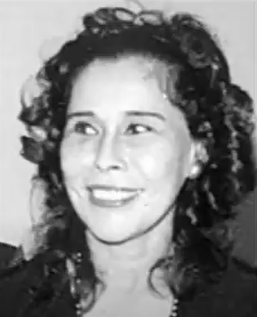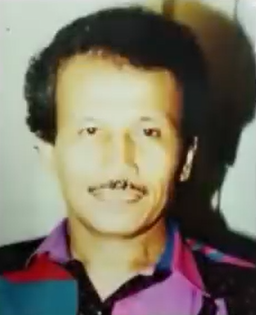
1956 - 2001
Nur Maznah binti Ismail
Summary
Name:
Nickname:
Mona FandeyYears Active:
1993Birth:
January 01, 1956Status:
ExecutedClass:
MurdererVictims:
1Method:
Beheading with an axeDeath:
November 02, 2001Nationality:
Malaysia
1956 - 2001
Nur Maznah binti Ismail
Summary: Murderer
Name:
Nur Maznah binti IsmailNickname:
Mona FandeyStatus:
ExecutedVictims:
1Method:
Beheading with an axeNationality:
MalaysiaBirth:
January 01, 1956Death:
November 02, 2001Years Active:
1993Date Convicted:
February 9, 1995bio
Nur Maznah binti Ismail was born on January 1, 1956, in Kangar, Perlis, Malaysia. She grew up in an environment where she explored her passion for performing arts at a young age. Maznah began singing and dancing early in her childhood, showing a strong interest in being a performer. As she grew older, she adopted the stage name Mona Fandey and pursued a career in music.
In 1987, Mona released her debut album titled "Diana." Her husband, Mohamad Nor Affandi Abdul Rahman, supported her music career by funding her projects and arranging television appearances. However, her music career did not achieve the level of success she had hoped for, and her popularity was limited.

After facing challenges in her singing career, Mona and her husband turned to witchcraft. They began practicing as "bomoh," a term for traditional Malaysian shamans or healers. Mona attracted a number of high-profile clients, including politicians, who sought her services, believing in her abilities to provide supernatural assistance.
Her success as a bomoh allowed her to enjoy a luxurious lifestyle. She stayed in five-star hotels, owned several expensive cars, and purchased multiple mansions across Malaysia. During this time, she also had a daughter named Mazdiana from her first marriage. In addition, she had two step-sons from her marriage with Affandi.
murder story
In 1993, Nur Maznah binti Ismail, better known as Mona Fandey, and her husband, Mohamad Nor Affandi Abdul Rahman, were involved in the murder of a politician named Mazlan Idris. The couple had promised to provide him with a talisman in exchange for a large sum of money and land titles. Mazlan went missing after withdrawing nearly RM300,000 from banks.

Following his disappearance, Mona went on an extravagant shopping spree, purchasing luxury items like a new car and jewelry with cash. A few weeks later, the police discovered Mazlan’s dismembered body buried at his property in Pahang. The remains were found in a pit, covered with cement. The body had been cut into 18 parts. An altar with various religious items and tools was also found at the scene.
On August 2, 1993, Mona, her husband, and their assistant Juraimi Hassan were charged with Mazlan's murder. During investigations, authorities began to link Mona to other potential crimes, including the disappearances of several housemaids and other families. The police believed these victims may have been involved in witchcraft rituals.

The trial began in September 1994. Evidence showed that money was withdrawn from Mazlan's accounts shortly before his death, and witnesses testified to seeing the couple with him. A plastic surgeon confirmed Mona underwent cosmetic surgery soon after Mazlan went missing. During the trial, it was revealed that Juraimi had confessed to beheading Mazlan, claiming he acted under Nor Affandi's orders.
All three defendants pleaded not guilty. The prosecution argued the murder was premeditated, aimed at obtaining Mazlan's wealth. Despite their defenses, on February 9, 1995, the trio was found guilty and sentenced to death by hanging. They remained in prison, their appeals for clemency were rejected over the following years.
On November 2, 2001, Mona, Nor Affandi, and Juraimi were executed. Mona reportedly stated, "I will never die," just before her execution. The case attracted significant public attention, impacting how murders and trials were perceived in Malaysia.